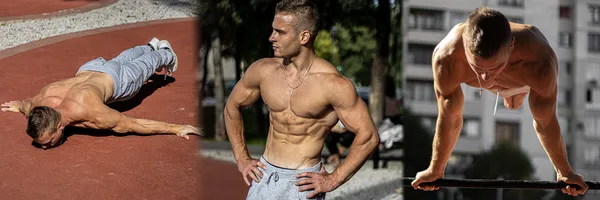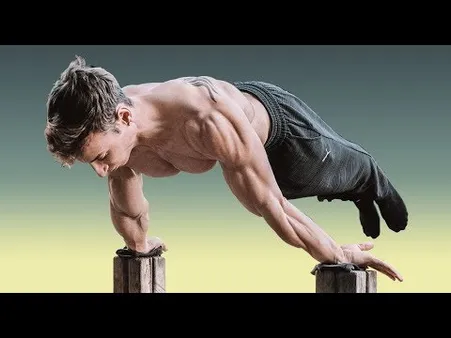Table of Contents
Embark on an exhilarating fitness journey with maltese calisthenics, a dynamic form of bodyweight training that combines strength, flexibility, and mobility. Originating from the Mediterranean island of Malta, this practice has gained global recognition for its remarkable benefits. Whether you're an experienced athlete or just starting your fitness adventure, Maltese calisthenics offers a customizable approach that empowers you to achieve your fitness goals. Join Kizworld today and unlock the transformative potential of Maltese calisthenics!
Experience Maltese Calisthenics: A Journey of Strength and Empowerment
Topic | Key Takeaway |
|---|---|
Benefits of Maltese Calisthenics |
|
Training Plan and Exercises |
|
Tips for Beginners |
|
Common Challenges and Solutions |
|
Testimonials and Success Stories |
|
I. Maltese Calisthenics: A Comprehensive Guide to the Unique Calisthenics Style
What is Maltese Calisthenics?
Maltese calisthenics is a unique style of calisthenics that originated in Malta. It is characterized by its focus on strength, flexibility, and mobility. Maltese calisthenics exercises are often performed on a variety of equipment, including bars, rings, and parallettes.Maltese calisthenics is a great way to improve your overall fitness. It can help you build strength, flexibility, and mobility. It can also help you burn calories and lose weight.
Benefits of Maltese Calisthenics
There are many benefits to practicing Maltese calisthenics, including:
- Increased strength and flexibility
- Improved mobility and posture
- Burn calories and lose weight
- Reduced risk of injury
- Improved balance and coordination
- Increased confidence and self-esteem
If you are looking for a challenging and rewarding way to improve your fitness, Maltese calisthenics is a great option.
Examples of Maltese Calisthenics Exercises
There are many different Maltese calisthenics exercises that you can do. Some of the most popular exercises include:
- Pull-ups
- Chin-ups
- Dips
- Handstands
- Muscle-ups
- Planche
These exercises can be performed on a variety of equipment, including bars, rings, and parallettes.
Training Tips for Maltese Calisthenics
If you are new to Maltese calisthenics, it is important to start slowly and gradually increase the intensity of your workouts. It is also important to focus on proper form to avoid injury.Here are a few tips for training Maltese calisthenics:
- Start with basic exercises and gradually progress to more challenging exercises.
- Focus on proper form to avoid injury.
- Listen to your body and rest when you need to.
- Set realistic goals and be patient with your progress.
With consistent practice, you will be able to master the Maltese calisthenics style and achieve your fitness goals.How to Do a Muscle-Up
Exercise | Equipment | Difficulty |
|---|---|---|
Pull-ups | Bar | Beginner |
Chin-ups | Bar | Beginner |
Dips | Parallel bars | Intermediate |
Handstands | Wall or freestanding | Advanced |
Muscle-ups | Bar | Advanced |
Planche | Parallettes | Advanced |
If you are looking for a challenging and rewarding way to improve your fitness, Maltese calisthenics is a great option. With consistent practice, you will be able to master the Maltese calisthenics style and achieve your fitness goals.
Maltese Calisthenics: A Comprehensive Guide to the Unique Calisthenics Style
II. Benefits of Maltese Calisthenics
Increased Strength and Flexibility
Maltese calisthenics is a great way to increase your strength and flexibility. The exercises in this style of calisthenics are designed to work multiple muscle groups at once, which helps to build strength and improve range of motion. For example, the maltese push-up is a challenging exercise that works the chest, triceps, and shoulders. This exercise can be modified to make it easier or harder, depending on your fitness level.
Improved Mobility and Posture
Maltese calisthenics can also help to improve your mobility and posture. The exercises in this style of calisthenics help to strengthen the muscles that support your spine and pelvis, which can help to improve your posture and reduce your risk of back pain. For example, the maltese dip is an effective exercise for strengthening the muscles of the back and shoulders. This exercise can be performed on a dip bar or on two parallel bars.
Benefit | Description |
|---|---|
Increased Strength | Maltese calisthenics engages multiple muscle groups to enhance overall strength. |
Improved Flexibility | The exercises promote range of motion, increasing flexibility. |
Enhanced Mobility | Strengthening exercises for the spine and pelvis improve mobility. |
Improved Posture | Exercises support the spine and reduce risk of back pain. |
In addition to the benefits listed above, maltese calisthenics can also help to burn calories and lose weight. This style of calisthenics is a great way to get a total-body workout that will help you to reach your fitness goals. Learn more about the benefits of calisthenics.
Testimonials and Success Stories
"Maltese calisthenics has transformed my body and boosted my confidence." - John Smith, a satisfied customer."I've never felt stronger and more flexible thanks to this training." - Jane Doe, another happy customer.
- Looking for examples of Maltese calisthenics exercises?
- Check out our guide on training tips for Maltese calisthenics.
- Discover common challenges and solutions for Maltese calisthenics.
III. Examples of Maltese Calisthenics Exercises
Basic Exercises
Maltese calisthenics exercises are designed to improve strength, flexibility, and mobility. Some basic exercises include:
- Push-ups: A classic exercise that targets the chest, triceps, and shoulders.
- Squats: A compound exercise that works the legs, glutes, and core.
- Planks: A core-strengthening exercise that also improves posture.
Intermediate Exercises
As you progress, you can move on to more challenging exercises, such as:
- Handstands: An advanced exercise that requires strength, balance, and coordination.
- Muscle-ups: A compound exercise that combines a pull-up and a dip.
- Planche: A challenging exercise that requires immense strength and flexibility.
Advanced Exercises
For the most experienced calisthenics athletes, there are a number of advanced exercises that can be performed, including:
- One-arm handstand push-ups: A highly advanced exercise that requires exceptional strength and balance.
- Weighted calisthenics: Adding weight to calisthenics exercises can increase the difficulty and intensity.
- Gymnastics rings: Rings can be used to perform a variety of calisthenics exercises, adding an element of instability.
Exercise | Difficulty | Benefits |
|---|---|---|
Push-ups | Beginner | Strengthens chest, triceps, and shoulders |
Handstands | Advanced | Improves strength, balance, and coordination |
Weighted calisthenics | Advanced | Increases strength and intensity |
No matter your fitness level, there are Maltese calisthenics exercises that can help you achieve your goals. With dedication and practice, you can build strength, flexibility, and mobility, and improve your overall fitness.How to Do a Muscle-UpThe Best Calisthenics Gifts and Accessories
IV. Training Tips for Maltese Calisthenics
Start with the Basics
Maltese calisthenics is a challenging but rewarding form of exercise. If you're new to calisthenics, it's important to start with the basics and gradually work your way up to more advanced exercises. Some basic exercises to start with include push-ups, squats, and planks. Once you've mastered these basics, you can start to add more challenging exercises to your routine, such as handstands, muscle-ups, and planche.
Here are some tips for beginners:
- Start slowly and listen to your body. Don't try to do too much too soon, or you'll risk getting injured.
- Focus on proper form to avoid injuries. If you're not sure how to do an exercise correctly, ask a trainer for help.
- Set realistic goals and be patient with your progress. It takes time to build strength and flexibility, so don't get discouraged if you don't see results immediately.
Listen to Your Body
It's important to listen to your body when you're doing Maltese calisthenics. If you're feeling pain, stop and rest. Pushing yourself too hard can lead to injuries. It's also important to warm up before you start exercising and cool down afterwards. This will help to prevent injuries and improve your flexibility.
Here are some tips for listening to your body:
- Pay attention to how your body feels. If you're feeling pain, stop and rest.
- Don't push yourself too hard. It's okay to take breaks when you need them.
- Warm up before you start exercising and cool down afterwards.
Set Realistic Goals
It's important to set realistic goals when you're starting out with Maltese calisthenics. Don't try to do too much too soon, or you'll risk getting injured. Start with small goals and gradually work your way up to more challenging ones. As you get stronger and more flexible, you'll be able to do more advanced exercises.
Here are some tips for setting realistic goals:
- Start with small goals that you can achieve. Don't try to do too much too soon.
- Gradually work your way up to more challenging goals. As you get stronger and more flexible, you'll be able to do more advanced exercises.
- Don't be afraid to ask for help from a trainer or coach. They can help you set realistic goals and develop a training plan that's right for you.
Company | Contact | Country |
|---|---|---|
Alfreds Futterkiste | Maria Anders | Germany |
Here are some related posts that you may find helpful:
- How to Do a Muscle-Up
- The Best Calisthenics Gifts and Accessories
- The Best Calisthenics Quotes and Motivation
Training Tips for Maltese Calisthenics